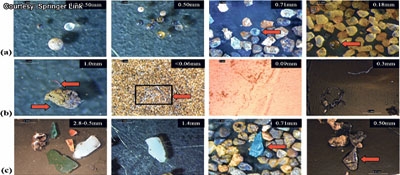The invisible invasion : How plastics find their way into our bodies
|

Sivakumar Vijayaraghavalu (PhD)
In an age where convenience reigns supreme, an unseen adversary lurks within our midst, breaching the defenses of our health and environment. This invisible foe, plastic pollution, has permeated every corner of the globe, from the deepest oceans to the air we breathe. Recent findings have shed light on how these persistent particles invade our bodies, sparking concern and a call to action.
Plastics, once celebrated for their versatility, now pose a significant threat as they degrade into microplastics (less than 5 mm in size) and nanoplastics (smaller than 1 micron). These minuscule invaders originate not only from cosmetic products like facial scrubs and toothpaste but also from the fragmentation of larger plastic items over time. The consequences of their omnipresence are now coming to the fore, with research revealing their capability to penetrate cellular barriers and integrate into human tissues, including the placenta, lungs, liver, and even breast milk.
The pathways through which plastics enter our bodies are varied and alarming. A study highlighted the presence of microplastics in sea salts from Italy and India, indicating that our very seasoning may carry these pollutants. Moreover, seafood, a dietary staple for billions, has not been spared, with numerous species found to contain these synthetic particles. This revelation underscores the extensive reach of microplastic pollution, affecting not just marine life but also the food on our plates.
However, the assault does not end with what we eat. Commercial drinking water, particularly from plastic bottles, has emerged as another significant source of exposure. Ground breaking research by Drs Wei Min and Beizhan Yan at Columbia University discovered a staggering concentration of around 240,000 nanoplastic particles per liter in bottled water, predominantly consisting of polymers such as polyamide and polyethylene terephthalate (PET), commonly used in water purification and packaging.
Even the very air we breathe is not immune. Microplastics have been detected in atmospheric samples across the globe, from the bustling streets of Paris to the remote mountains of Nepal, highlighting their widespread dispersion. This aerial transmission mode suggests that inhalation is a major contributor to our internal accumulation of plastics, further complicating the narrative of their invasion.
The cosmetic industry, too, plays a role in this pervasive issue, with microbeads in personal care products adding to the microplastic menace. Despite legislative efforts and partial bans in countries like the USA, South Korea, and the European Union, these tiny pollutants find their way into our systems through the skin, ingestion, and inhalation, calling for heightened consumer vigilance and a shift towards safer alternatives.
Compounding the problem, everyday actions such as opening plastic packaging can unwittingly release microplastics, underscoring the routine nature of our exposure and the complexity of combating this pollution.
The evidence is clear: microplastics and nanoplastics have infiltrated our bodies, with potential implications for our cardiovascular health among other concerns. This silent crisis demands our immediate attention and action. As we confront this challenge, let us be mindful of the products we use, the water we drink, and the air we breathe, striving for a future where health and sustainability are paramount. It's time for a collective awakening to the realities of plastic pollution and a concerted effort to mitigate its impact on our health and the environment.
This campaign is not merely about environmental stewardship but a dire plea for the well-being of current and future generations. The time for awareness and action is now. By understanding the myriad ways plastics enter our lives and working together to reduce our reliance on them, we can pave the way for a healthier, more sustainable world. This is our moment to act, to protect our health and the planet for future generations, fostering a legacy of vitality and care for the environment that sustains us all.
The writer is an INNOVATOR AWARDEE – From Cleveland Clinic Foundation (#2 rank in the world), Cleveland, Ohio, USA and is now serving as Associate Professor, Department of Life Sciences (Zoology), Manipur University (Central University), Manipur, India E-mail - [email protected]; [email protected]

